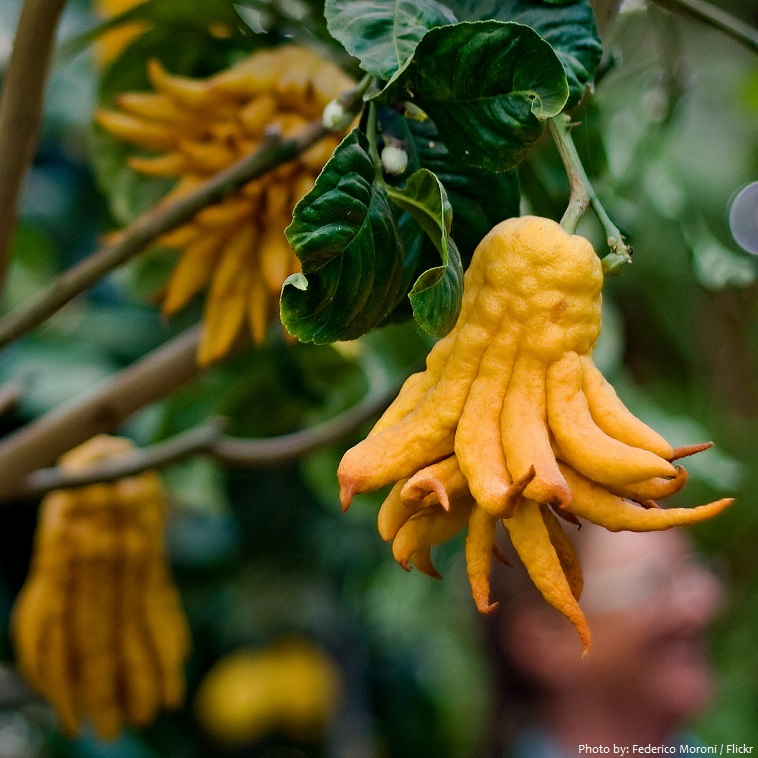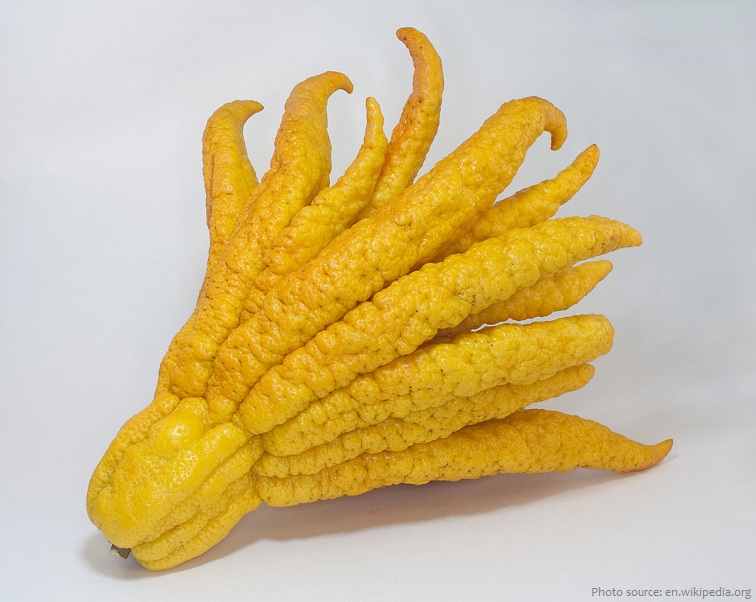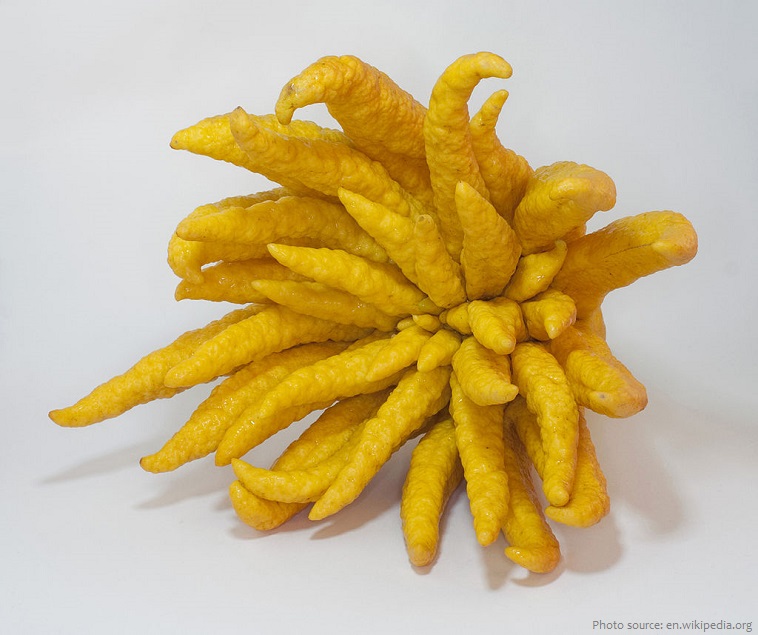Citrus medica var. sarcodactylis, commonly called Buddha’s hand or fingered citron is an unusually shaped citron variety.
The origin of this kind of citron can be traced back to northeastern India, China or Nepal , where most domesticated citrus fruits originate.
Women would cut the Buddha’s hand citron into the form of flowers or birds and would then simmer them in honey for use as centerpieces on a banquet table, according to Frederick J. Simoons’s Food in China: A Cultural and Historical Inquiry.
Buddha’s Hand citron fruits usually mature in late fall to early winter and hold moderately well on the tree, but not as well as other citron varieties.
The tree is small and shrubby with an open habit.
The leaves are distinctive in form, being oblong and somewhat rumpled, with serrate margins.
The flowers and new leaves are heavily tinged with purple.
The fruit is segmented into finger-like sections, like those seen on pictures and statues of Buddha. The fruit’s fingers contain only the white part of the fruit and sometimes a small amount of acidic pulp, but many of them are completely juiceless and some are seedless.
The different cultivars and variations of this citron variety form a gradient from “open-hand” types with outward-splayed segments to “closed-hand” types, in which the fingers are kept together.
Unlike most citrus, the rind of the Buddha’s hand isn’t bitter but sweet and candies well—it’s been a popular way to serve the fruit for centuries.
Culinary uses throughout the world include zest for salad dressings, marinades, cooked foods or drinks; rind can be candied; marmalades or jams; fingers can be thin-sliced longitudinally and added to salads and cooked foods.
The aromatic rind of the Buddha’s Hand infuses perfectly in alcohols like vodka or gin.
In China the Buddha’s Hand citron symbolizes happiness and long life, because its name, “fo-shou”, has those meanings when written with other characters.
In Japan, the fruit is a popular gift at New Year’s, for it is believed to bestow good fortune on a household.
Historically, fruits have been used in the Buddhist religion as temple offerings in large part because each fruit (especially one with closed fingers) purportedly resembles a closed hand in prayer.
The tree is very popular as an ornamental, often in bonsai form, in pots.


